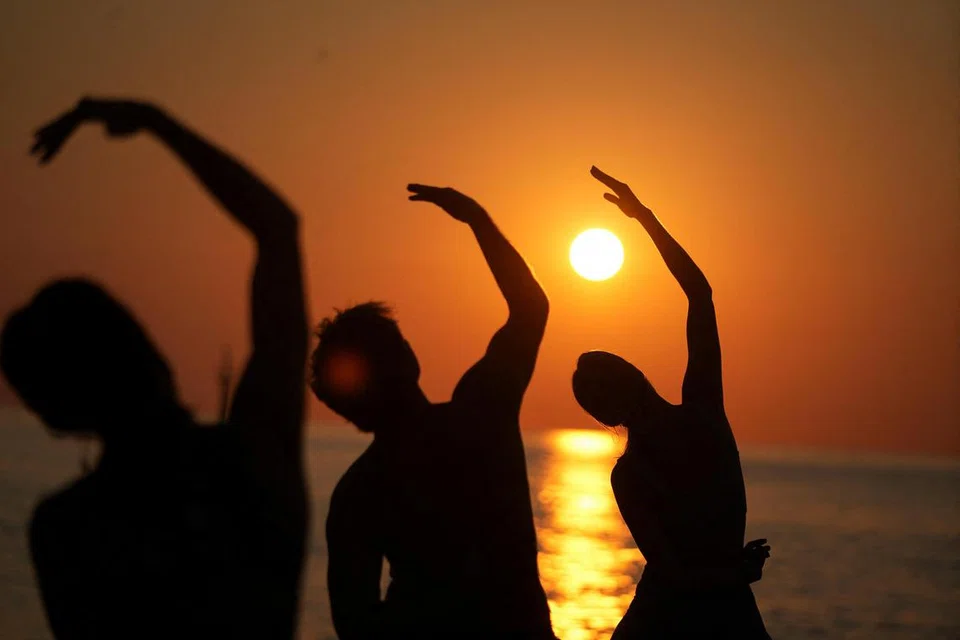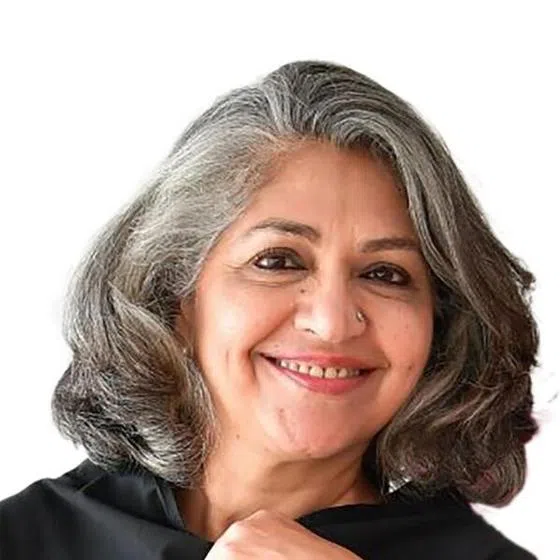It started innocently enough. A friend in a WhatsApp group posted a reel of a woman who claimed that holding her breath for exactly 18.5 seconds every morning cured her acid reflux, insomnia, anxiety and her husband’s snoring.
“Try it,” the message insisted. “Changed my life.”
Of course, I tried it. I now have acid reflux, insomnia, anxiety, and a headache from the breath-holding. My husband still snores.
Welcome to the jungle that is the modern Indian diaspora’s relationship with wellness in Singapore.
A jungle filled with matcha shots, Shirodhara, ghee oil-pulling, and, if you’re truly enlightened, turmeric-laced almond milk hand-whipped by a left-handed Tibetan monk.
Once upon a time, wellness meant a brisk walk around East Coast Park and a cup of Milo. Now, thanks to all the efforts of the Ministry of Health it’s a lifestyle, a hashtag, and a competitive sport.
Open Instagram and your life will never be the same again. Apparently, you’re not living right unless you have:
• Ashwagandha in your morning smoothie.
• A jade roller in your fridge.
• An infrared sauna blanket in your living room.
• And a slightly judgy look whenever someone mentions white sugar. Remember,Indians are predisposed to diabetes!
Reels are the new religion. And their high priestesses and gurus speak directly into your soul at 7am while you’re still groggy and searching for your glasses.
“Hi beautiful soul,” they whisper. “This one detox smoothie will flush 23 years of toxins, regret, and processed cheese out of your body. You just need Himalayan pink salt, chia water activated by the full moon and a teaspoon of lion’s mane mushroom powder imported from an organic forest in New Zealand.”
I tried it. It tasted like expensive grass.
Among the Indian community in Singapore, wellness has now reached that crucial stage. It’s no longer enough to do yoga. You have to do aerial yoga. And not at the community centre, thank you, but at a studio with exposed brick walls and kombucha on tap.
You say you meditate? That’s cute. I chant in Sanskrit while submerged in an ice bath wearing a crystal crown.
Everyone has a wellness guru now – usually named something like Shivani Om Light or Pradeep Detoxana – and they must be followed on at least two platforms.
Their advice includes things like “eat sunrays for breakfast” and “listen to your liver”.
My liver doesn’t talk, but it’s definitely protesting.
Wellness has become so confusing that I once signed up for a “Yogurt & Sound Bath” thinking it was a tasting event with ambient music. I showed up with a spoon. Everyone else was in activewear and chanting to the vibrations of a gong that cost more than my entire living room set.
I was told I had blocked chakras. I told them I just wanted a snack.
This is the Return of Ancient Wisdom (with a modern makeover).
Don’t get me wrong. As Indians, we come from a civilisation that invented yoga, ayurveda, turmeric milk, and the concept of detox before Gwyneth Paltrow was a twinkle in Hollywood’s eye. But now those same ancient practices have been rebranded by influencers with marketing degrees and ring lights.
Old: Grandma gave you haldi doodh (turmeric milk) when you were sick.
New: “Golden latte” for S$9.50 from a cafe that spells chai as “chai”.
Old: You did pranayama to relax.
New: “Breathwork Journey with Conscious Touch and Quantum Healing.” Price on request.
My grandmother could run a wellness empire from her kitchen if she knew what the word “brand” meant.
It’s not just Instagram. If you’re a member of more than three Indian WhatsApp groups, you already receive daily wellness wisdom like:
• “Wake up at 4.30am and stare at a tulsi plant.”
• “Apply ghee to your navel. It aligns your destiny.”
• “Avoid cold water. It blocks your third eye.”
The last time I tried to avoid cold water, it was 37 degrees in Singapore and I fainted next to the fridge.
Here in Singapore, we blend the East and West beautifully. So wellness here is a delicious mishmash:
• You attend a Vedic chanting session, then pop into Cold Storage for Greek yogurt and collagen water.
• You fast on Mondays for Shiva, but track your macronutrients on an app designed in California.
• You refuse to eat rice after 7pm, unless it’s biryani, which doesn’t count.
And don’t forget the weekend warriors: running from Zumba to Line Dancing to Qi Gong and then straight to prata at Tekka. “It’s cheat day,” they say, though every day seems a little cheat-y.
Now, before you accuse me of mocking the wellness movement entirely, let me clarify – I’m not against movement, moderation, or even meditation. In fact, I’ve realised that, as much as I love laddoos and sarcasm, they don’t count as cardio.
For the Indian diaspora in Singapore, wellness isn’t just a trend – it’s a lifeline. Many of us are working long hours, spending time with family, and battling that genetic lottery that says: “You shall put on weight even while breathing in the aroma of ghee.”
But you have no choice. Health has to be a major priority!
I tried intermittent fasting. But during my “eating window” I consumed three meals, two snacks and a mango milkshake. Clearly, I misunderstood the assignment.
Let’s talk about BMI – the mysterious number that tells you whether you’re “underweight”, “normal” or in “denial”.
For most Indians, the BMI chart feels like a personal insult. I’ve seen uncles who jog 10km a day and only eat sprouts still rank as “overweight”.
Maybe BMI stands for Basically Misleading Indians?
And honestly, was BMI designed for average people or fashion runway coat hangers? It never accounts for essential factors like muscle mass, bone density or whether you have a healthy layer of protective cushioning on your hips.
Because let’s be real – if I ever slip and fall on a wet MRT platform, it’s my hips that are going to save my life. That’s not fat, it’s built-in airbags.
The trick is: how do we cut back without going full monk mode?
The problem with Indian food is that it’s too good. You can’t tell someone to eat a single kaju katli (cashew burfi). That’s like saying “have one molecule of oxygen”.
One auntie said she’s cut sugar entirely from her diet. I watched her eat five dates and call it “natural sweetness”. Another insists she eats “only fruits”, then demolishes a kilo of mangoes like a contestant on The Hunger Games.
We have to find our own middle path. Maybe eat the gulab jamun, but not the second one. Walk an extra half hour, dance a little more, lift some weights – or lift your mother’s expectations. That counts too.
A Final Thought.
So yes, wellness is important. Especially as we grow older, stiffer and more prone to making creaking noises when we get off the couch. We owe it to ourselves to move more, eat smart and sleep better.
But let’s not become zealots with celery sticks in one hand and superiority in the other. Let’s laugh, love our hips, honour our bodies and accept that, once in a while, a samosa is self-care.
Namaste, and pass the karela chips.


